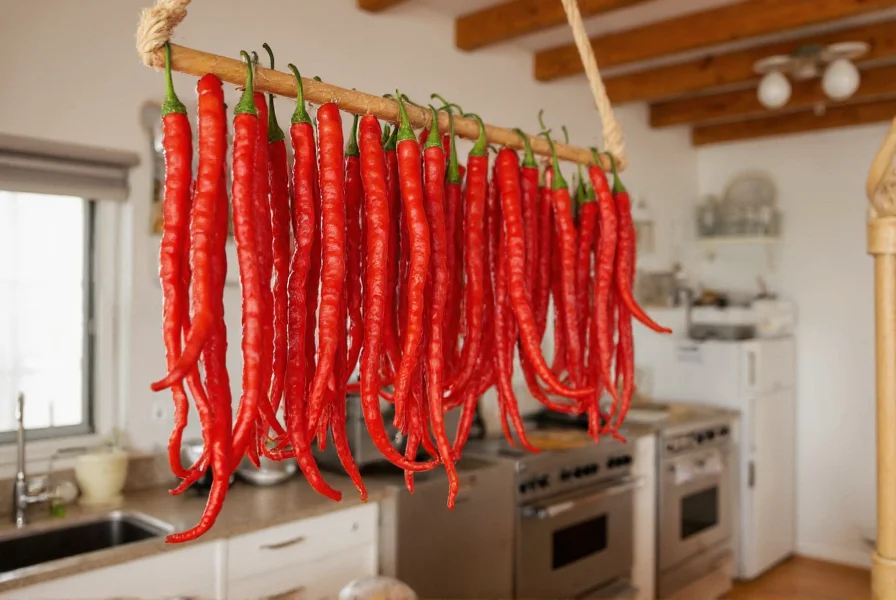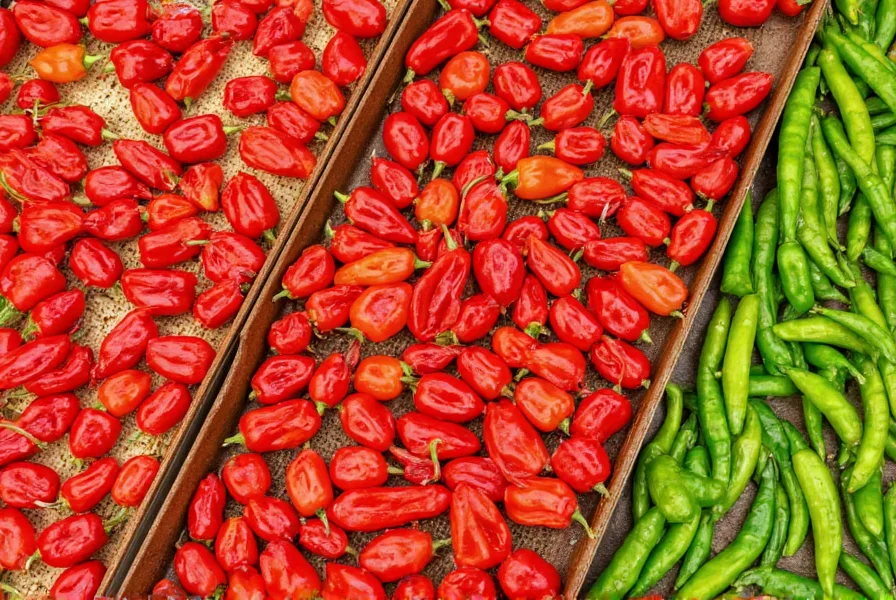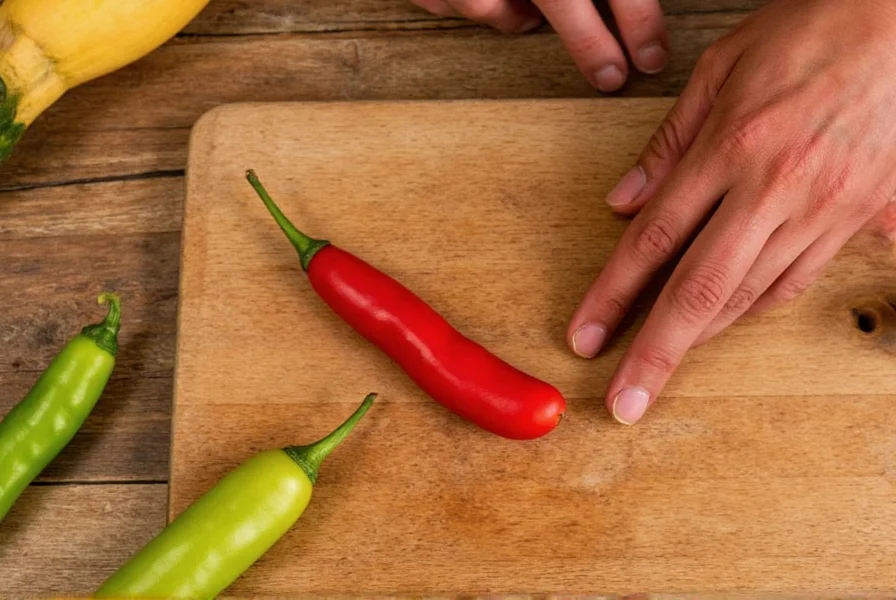Drying hot peppers is an excellent way to preserve your harvest and enjoy their fiery flavor year-round. Whether you've grown your own jalapeños, habaneros, or cayenne peppers, or purchased them in bulk, proper drying techniques maintain both heat and flavor while preventing mold and spoilage. This comprehensive guide covers multiple drying methods with specific temperature guidelines, timing recommendations, and storage techniques to ensure your dried peppers retain maximum potency.
Air Drying Hot Peppers: The Traditional Method
Air drying represents one of the oldest and simplest approaches to preserving hot peppers without specialized equipment. This method works best in environments with low humidity (below 60%) and good air circulation.
Step-by-step process:
- Wash peppers thoroughly and pat completely dry with clean towels
- Leave stems intact and string peppers through the stem area using kitchen twine
- Hang in a warm, dry, dark location with good air circulation
- Rotate peppers every few days for even drying
Air drying typically takes 2-4 weeks depending on pepper size and environmental conditions. This method preserves capsaicin (the compound responsible for heat) exceptionally well when done correctly. For those wondering how to dry hot peppers without a dehydrator, this traditional technique remains highly effective.

Oven Drying Hot Peppers: Controlled Environment Approach
Oven drying provides more consistent results than air drying, especially in humid climates. The key to success is maintaining low temperatures to preserve flavor compounds.
| Pepper Type | Preparation | Temperature | Drying Time |
|---|---|---|---|
| Thin-walled (cayenne) | Sliced lengthwise | 135°F (57°C) | 8-12 hours |
| Medium-walled (jalapeño) | Sliced into rings | 125°F (52°C) | 10-14 hours |
| Thick-walled (habanero) | Sliced into thin strips | 115°F (46°C) | 12-18 hours |
Place prepared peppers on wire racks over baking sheets to allow air circulation. Prop the oven door slightly open with a wooden spoon to maintain proper airflow and prevent moisture buildup. Check periodically and rotate trays for even drying. This method answers the common question of how long to dry hot peppers in the oven with precision based on pepper characteristics.
Dehydrator Method: Most Consistent Results
Food dehydrators provide the most controlled environment for drying hot peppers, making them ideal for those seeking reliable results. When considering how to dry hot peppers with a dehydrator, follow these professional guidelines:
- Wash and thoroughly dry peppers before slicing
- Slice peppers uniformly (1/8 inch thick) for consistent drying
- Arrange in single layer without overlapping
- Set temperature between 125-135°F (52-57°C)
- Rotate trays every 2 hours for even airflow
- Check for doneness after 10 hours (thin peppers) or 18 hours (thick peppers)
The peppers are properly dried when they snap cleanly rather than bend. This method preserves the highest percentage of capsaicin compared to other techniques, addressing the concern of how to dry hot peppers without losing heat. Dehydrators maintain consistent low temperatures that prevent the degradation of flavor compounds while ensuring complete moisture removal.

Microwave Drying: Quick but Less Effective Method
While not ideal for large batches, microwave drying offers the fastest method for drying small quantities of hot peppers when time is critical. This technique works best for immediate use rather than long-term storage.
Place sliced peppers between two paper towels and microwave on medium power for 2-minute intervals, checking and rearranging between cycles. Total drying time typically ranges from 6-12 minutes depending on pepper quantity and microwave wattage. The peppers should become leathery but not brittle. This approach answers the query how to dry hot peppers quickly though it preserves less heat than slower methods.
Testing for Complete Dryness
Properly dried peppers should exhibit these characteristics:
- Brittle texture that snaps when bent
- No visible moisture when broken
- Darkened but not burned appearance
- Distinctive concentrated aroma
Peppers that remain leathery or flexible contain too much moisture and risk developing mold during storage. For those concerned about how to tell if hot peppers are dry enough, perform the snap test: properly dried peppers should break cleanly rather than bend.
Storing Dried Hot Peppers Properly
Correct storage determines how long your dried peppers maintain potency. Follow these guidelines for maximum shelf life:
- Condition peppers for 7-10 days in paper bags to ensure complete dryness
- Store in airtight glass containers away from light and heat
- Include silica gel packets to absorb residual moisture
- Label containers with pepper type and drying date
- Store in cool, dark location (ideal temperature: 50-70°F/10-21°C)
When stored properly, dried hot peppers maintain optimal flavor and heat for 6-12 months. For extended storage up to 2 years, consider vacuum sealing with oxygen absorbers. This addresses the common question of how long do dried hot peppers last with practical solutions.
Reconstituting Dried Hot Peppers
When using dried peppers in recipes requiring fresh texture, proper reconstitution preserves flavor:
- Place dried peppers in heatproof bowl
- Cover completely with boiling water
- Soak for 20-30 minutes until softened
- Drain and pat dry before use
- Reserve soaking liquid for added flavor in sauces
For those wondering how to use dried hot peppers in cooking, remember that dried peppers typically provide 2-3 times more heat than fresh counterparts, so adjust quantities accordingly.
Safety Considerations When Drying Hot Peppers
Working with hot peppers requires precautions to prevent skin and eye irritation:
- Wear disposable gloves during preparation
- Avoid touching face while handling peppers
- Work in well-ventilated area, especially when using oven method
- Consider wearing safety glasses with extremely hot varieties
- Wash all surfaces and tools thoroughly after processing
When drying peppers in enclosed spaces like ovens or dehydrators, capsaicin particles can become airborne. Ensure proper ventilation to prevent respiratory irritation, particularly important for those asking is it safe to dry hot peppers indoors.
Frequently Asked Questions
Can you dry hot peppers with the seeds inside?
Yes, you can dry hot peppers with seeds intact. The seeds contain minimal capsaicin (the compound that creates heat), so leaving them in won't significantly affect the drying process or final heat level. Many traditional drying methods like ristras keep seeds inside the peppers.
Do dried hot peppers get hotter over time?
No, dried hot peppers don't actually get hotter as they age. The perception of increased heat comes from moisture loss - with less water content, the same amount of capsaicin becomes more concentrated. Properly stored dried peppers maintain consistent heat levels for 6-12 months before gradually diminishing.
What's the best way to dry extremely hot peppers like ghost peppers?
For extremely hot peppers, use a dehydrator at 125°F (52°C) with maximum ventilation. Wear gloves and eye protection during preparation. Slice peppers thinly (1/8 inch) for faster, more even drying. Process in small batches with extended drying time (18-24 hours) to ensure complete moisture removal while preserving heat compounds.
Can you dry hot peppers in the sun?
Yes, sun drying works in arid climates with low humidity (below 50%) and temperatures above 90°F (32°C). Place peppers on mesh screens elevated off the ground, cover with cheesecloth to prevent insect access, and bring indoors at night. This method typically takes 3-7 days but carries higher mold risk than controlled methods in humid environments.
How do you prevent mold when drying hot peppers?
Prevent mold by ensuring complete surface dryness before processing, maintaining temperatures above 125°F (52°C) during drying, providing excellent airflow around all peppers, and conditioning properly before storage. For humid environments, use a dehydrator with a fan or add rice grains to storage containers to absorb residual moisture.











 浙公网安备
33010002000092号
浙公网安备
33010002000092号 浙B2-20120091-4
浙B2-20120091-4